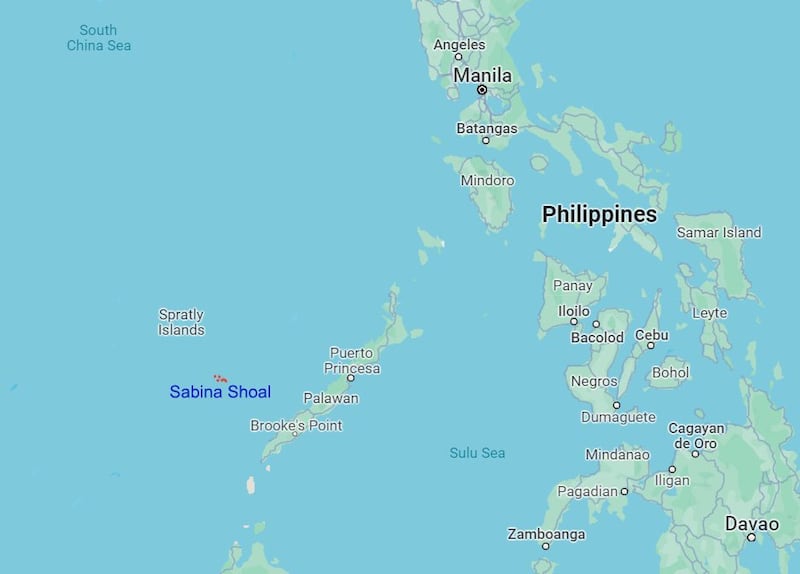China on Friday released the first ecological report to back its claim on Sabina Shoal, a hotly disputed reef that in recent days has become a new flashpoint between Beijing and Manila in the South China Sea.
There was no evidence of widespread coral bleaching on the reef, as alleged by the Philippines this year, said the Chinese Natural Resources Ministry in a survey, adding that the corals are “generally in good health with some localized damages.”
Manila suspected Beijing of reclaiming an artificial reef around Sabina Shoal, known as Escoda Shoal in Philippines and as Xianbin Jiao in China, after discovering that crushed corals had been dumped there, which it said damaged the ecosystem.
But the authors of the report said that “frequent human activities” by Philippine personnel had caused a significant impact in and around Sabina Shoal.
China also accused the Philippines of “illegally mooring” ships, including a large coast guard vessel – the BRP Teresa Magbanua – in the shoal’s lagoon, disrupting the normal coral growth in the area.
The Chinese coast guard said on Wednesday a Philippine H145 helicopter dropped supplies to the BRP Teresa Magbanua after attempts by the Philippine coast guard to resupply the vessel were repeatedly blocked by China.
The ship has been in the area since April, the longest deployment of a Philippine coast guard vessel, to monitor China’s suspected “illegal activities” at the shoal.
RELATED STORIES
[ Philippines, China clash near disputed shoal in South China SeaOpens in new window ]
[ China, Philippines trade blame after ships collide in South China SeaOpens in new window ]
[ Manila accuses Beijing of island building in South China SeaOpens in new window ]
China accused the Philippines of “forcibly occupying” Sabina Shoal while the Philippine coast guard has insisted that the vessel is on a regular deployment to “maintain our presence and ensure the protection of this area.”
The standoff resulted in several collisions, for which the two sides blamed each other.
Radio Free Asia contacted the Philippine Department of Foreign Affairs for reaction to the Chinese report but had not received a reply by time of publication.
Sabina Shoal a Chinese island?
Sabina Shoal is generally known as a low-tide elevation in the Spratly Islands, well inside the Philippines’ exclusive economic zone, or EEZ, and only 75 nautical miles (140 km) from the Philippine island of Palawan.
An EEZ gives the coastal state exclusive access to natural resources in the waters and in the seabed.
However, the Chinese survey – done between May and July this year – found that parts of the naturally formed shoal are above water at high tide.
This means the shoal can qualify as an island in accordance with the United Nations Convention on the Law of the Sea, or UNCLOS, said Chen Xiangmiao from the National Institute for South China Sea Studies, as cited by China's state-run tabloid The Global Times.

UNCLOS says that "an island is a naturally formed area of land, surrounded by water, which is above water at high tide" and it is entitled to its own territorial sea, as well as an exclusive economic zone and continental shelf if it can sustain human habitation.
If Sabina Shoal is recognized as a Chinese island, China can claim sovereignty to the waters around it, making the presence of Philippine vessels there illegal.
But in order to gain recognition, Beijing will have to bring the case to the U.N. in a long legal process.
China claims most of the South China Sea despite protests from neighboring countries and an arbitration tribunal ruling in 2016 that China’s claims were unlawful.
Edited by Taejun Kang and Mike Firn.
